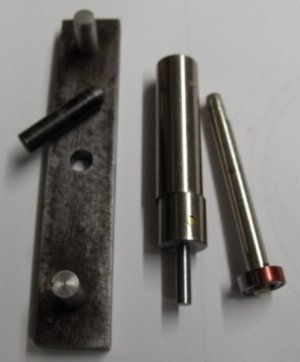some of you are the absolute WORST at giving advice. OR maybe I am just stupid? HOW DOES AN EDGE FINDER FIND CENTER???? I'm guessing that people didnt read my entire first post. Ok, the edge finder found the edge..... now what? How does my edge finder tell me what 50% of my diameter is when my machine has no digital read out? Telepathy? Do I turn the lights out for 10 seconds and then back on and I will magically have a pilot hole in the center? Here is what I have..... I have a bare bones JET JDM18 mill (no DRO), I have a machinist vise that is missing the nut thing that locks the jaw, I have a Yuasa dividing head. I have a Brown and Sharpe dial caliper, a starett micrometer which is super small, I havent even looked to see how big that goes. I might have another micrometer in the tool box. I have a Mitutoyo dial test indicator and a good assortment of machinist rulers and squares that were my fathers from when he was building models of chemical plants for Monsanto to make chemicals that are killing us all. Oh, and I have an old school tachometer somewhere but not sure where that is or how to use it..
I'm about ready to just measure a few spots to find center, drill it and call it a day.

